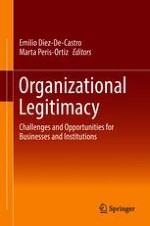2018 | OriginalPaper | Chapter
9. Legitimacy and Reputation of Organizations: Their Relationship with Management Systems and Financial Performance
Authors : Natalia Orviz Martínez, Tatiana Cuervo Carabel, Cristina del Castillo Feito
Published in: Organizational Legitimacy
Publisher: Springer International Publishing
Activate our intelligent search to find suitable subject content or patents.
Select sections of text to find matching patents with Artificial Intelligence. powered by
Select sections of text to find additional relevant content using AI-assisted search. powered by
